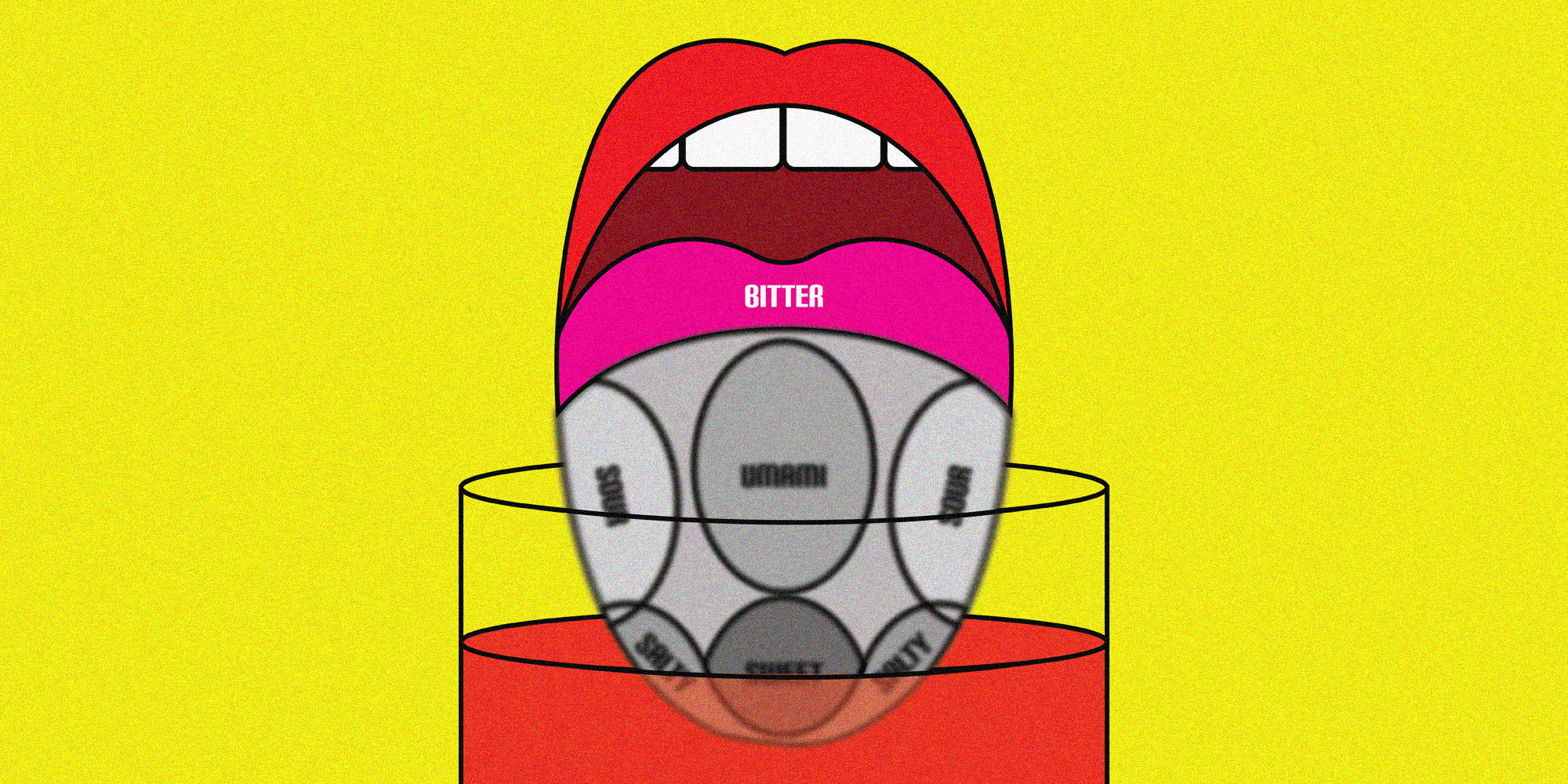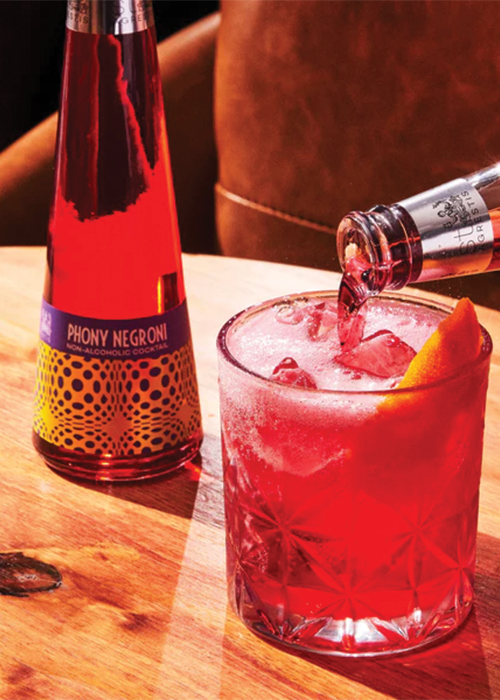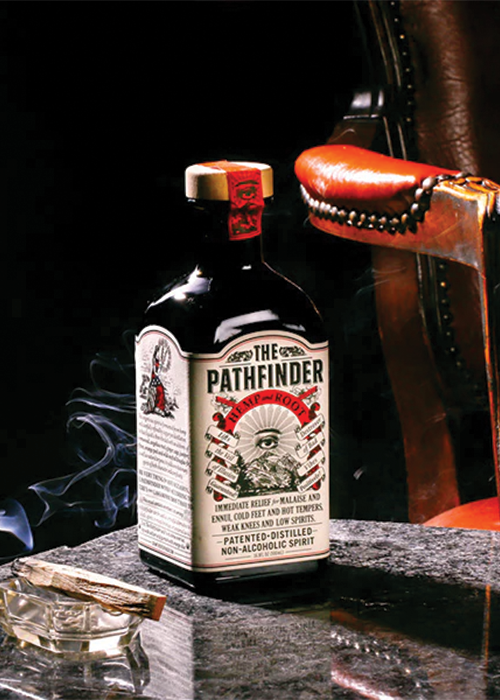


Driven in large part by millennial and Gen Z consumers, the non-alc sector has exploded in the past decade, and innovative products are making their presence known on bottle shop shelves and bar menus alike. But while drinkers are opting for spirits such as tequila or bourbon when drinking full-proof or gravitating toward cocktails like the Spritz and Espresso Martini, a different flavor is winning on the sober scene: bitter.
Across the country, non-alcoholic drinks brands with bitter profiles are flying off of store shelves. Take The Pathfinder, for example. Launched in Seattle in 2021, the hemp-derived NA spirit is currently available nationwide and has quickly gained favor among drinkers and non-drinkers alike. In fact, some retailers have even had to implement a one-bottle-per-customer limit in order to ensure equal access. It isn’t just consumers who are interested in these types of zero-proof spirits, though — bartenders are, too. At 10 of the best non-alcoholic cocktail programs in the U.S., nine prepare booze-free bitter beverages, and several explicitly call out The Pathfinder.
Non-alcoholic RTDs are also finding tremendous success with consumers right now, with the category swelling by 36 percent in 2023 alone, according to the IWSR. Spoiler alert: It’s a bitter brand currently leading the charge. In 2023, St. Agrestis sold 1 million bottles of its aptly named Phony Negroni. Last year, that number nearly doubled.
But what is it about these drinks that has people clamoring during sober occasions, especially when bitter beverages outside of the Negroni are relatively niche in the full-proof world? And how have they been able to successfully provide most of the same sensory and psychological experiences as consuming alcohol?
Non-alcoholic bitter beverages have won over consumers with their punchy and unmistakable flavor profiles. But unlike NA versions of spirits like tequila or bourbon, which tend to be artificially flavored, NA amari, aperitifs, and digestifs have a flavor derived from the exact same botanicals used in their alcoholic foils. These ingredients don’t just imbue drinks with herbal and earthy flavors. They provide the same fiery burn as alcoholic products while seamlessly blending in with the remainder of the botanical bouquet.
Rather than achieving this heat by tossing in an abundance of cayenne pepper or chilis — which may feel out of place in a bitter beverage — producers often opt for ingredients like ginger, angelica root, or green cardamom. It’s not a coincidence that these very botanicals are often front and center in alcoholic amari; it’s just a bonus that they provide the very burn non-alcoholic beverages require to be convincing one-to-one swaps.
At the developmental stage, Pathfinder co-founder Chris Abbott says he and his fellow co-founders weren’t even aiming to create a bitter product, but it was bitter roots that imbued their NA distillate with the most flavor and complexity.
“Back in the day, hemp was gaining popularity in Italy at the same time as amaro and amaro was all about the beneficial properties of herbs and roots. Alcohol was really just a preservative for the most part,” he says. “There was something about this idea of roots and botanicals bringing in that complexity, so we started experimenting and almost immediately we went down the bitter root route. Now, we achieve bitterness in our product the same exact way amaro does.”
Similarly, Brooklyn-based St. Agrestis achieves bitterness in its lineup of Phony Negronis the same way amaro does, but the brand’s co-founders had a much different point of reference than the Pathfinder team. While the brand is now best known for its non-alcoholic offerings, St. Agrestis actually got its start in 2018 as an alcoholic amaro distiller. Co-founded by Louie and Matt Catizone, sons of Italian immigrants, along with Steven DeAngelo of Greenhook Ginsmiths, the brand has always prioritized botanicals as flavoring agents.
But when Louie attended Bar Convent Berlin in 2019, he saw a gap in the market that St. Agrestis could easily fill. Excitement for non-alcoholic drinks in Germany was so much more potent at the time than it was stateside, and he knew it was only a matter of time before that fervor crossed the Atlantic. On that trip, Louie and his fellow co-founders decided to launch a non-alcoholic Negroni and developed their theory on how to do it right.

“Our hypothesis was relatively simple considering Steven had spent the better part of a decade sourcing 30 botanicals for spirits,” Louie says. “So we figured if we take the same 30 botanicals from five continents and extract them without alcohol, then the finished product should taste a whole hell of a lot like the alcoholic version.”
Extracting flavor from botanicals is only one half the equation, though. After all, what good is a non-alcoholic spirit if it mimics an alcoholic amaro but the texture is watery and thin? Finding ways to add depth and body to the liquid is equally important, and luckily for bitter beverage producers, there’s a pretty effective (and category-acceptable) way to do so: sugar.
While alcoholic spirits categories like whiskey, tequila, gin, and vodka contain trace amounts of sugar (or none at all), alcoholic amaro requires a fairly hearty dose to balance out the astringency. It’s unavoidable — amari, aperitifs, and digestifs contain sugar, and typically in pretty high concentrations. Campari, for example, has roughly seven grams per serving. Amaro Nonino has somewhere around six. When removing alcohol for NA analogs, sugar is, essentially, the only compound that adds viscosity to the palate. In other words: With no sugar, there is no weight, no real mouthfeel, and if that’s missing, the alcohol allusion disappears, too.
“We toyed around a lot with the idea of sugar and questioned if Phony should have less than it does,” Louie says. “But the problem with using less sugar is it just doesn’t taste like a Negroni anymore. We can make a Negroni without alcohol taste like a Negroni still. But we can’t make a Negroni without alcohol and without the right amount of sugar taste like a Negroni. It’s just not possible.”
The sugar conundrum posed a similar issue for the Pathfinder’s co-founders, who wrestled with the idea of sweeteners in their NA spirit considering the category had previously been considered a “health product” by the masses. As the non-alcoholic category was gaining momentum, many equated zero-proof beverages with wellness drinks with added benefits. Added sugar simply isn’t congruent with wellness, but should non-alcoholic drinks really be riding on their potential health qualities?
“You don’t go to a bar for health and wellness, you go to have fun and you go to socialize,” Abbot argues. “To get the right mouthfeel and to get that flavor coming across, sugar is absolutely essential. It’s really the thing that binds everything together and creates something that feels, acts, and tastes like a spirit.”
“Your spirit imitators are never going to be able to 100 percent match their originals, but when you’re thinking about things that are trying to be a non-alc Campari, or just bitter in general, there is so much more room to play.”
The sweetener is also what allows these bitter non-alcoholic spirits to function so well in cocktails. If the zero-proof version has all of the recognizable qualities and a similar weight to its full-proof counterparts, bartenders won’t have to navigate a minefield trying to figure out how to use it (and make it taste good).
“Having a strong bitter profile, having sugar, having that mouthfeel, it all made The Pathfinder a tool that’s easy to use,” says Kraig Rovensky, partner at Life on Mars cocktail bar and global brand ambassador for the brand. “So speaking for myself that’s why I fell in love with it, because it tasted like all of the other things that I love and know very well.”
While these beverages contain their fair share of sugar, that doesn’t make them sweet. Instead, the sugar provides a weighty texture that allows bitter botanicals to penetrate the taste buds and linger long onto the finish. It’s these bitter flavors that make such drinks feel like they’re for adults, even though there is an inherent lack of alcohol.
This reasoning isn’t just backed by science; evolutionary history supports the proposition as well. After all, bitter is one of the only flavor compounds humans perceive as a potential warning, going back to a time when most things that smelled and tasted bitter tended to contain poison. It’s a challenging profile to get used to, and that’s partly why we take it seriously. But once it’s acquired, often in adulthood, it becomes a flex to be able to sip (or shoot) astringent drinks without making a face. Similarly, this is why we take drinks like the Negroni seriously and why bartenders call for shots of Fernet while on nights out.

“One of the areas of improvement in non-alcoholic drinks has been the evolution of making them feel more like adult beverages rather than juice,” says Josh Harris, owner of Trick Dog in San Francisco, where a handful of non-alcoholic cocktails seamlessly blend with the bar’s full-proof menu offerings. “And I would describe bitter flavors as mature flavors. Bringing these mature flavors into an immature concoction, like one without alcohol, makes it more adult.”
These bitter drinks do more than just make drinks feel more mature, though. They provide bartenders of all stripes with versatile flavors and weighty palates, allowing them room to explore with full confidence that their NA concoctions won’t taste overly diluted. Rather than having a relatively one-dimensional flavor — tequila, at the end of the day, should taste like tequila — the amari category is vast and extremely diverse. And this diversity is creeping into the non-alcoholic space.
“Your spirit imitators are never going to be able to 100 percent match their originals, but when you’re thinking about things that are trying to be a non-alc Campari, or just bitter in general, there is so much more room to play,” Rovensky says. “You can create an entirely new flavor profile or new cocktail instead of just trying to make your NA whiskey taste like an Old Fashioned, which is practically impossible right now.”
The article For Non-Alcoholic Drinks Brands, Bitter Is Best appeared first on VinePair.